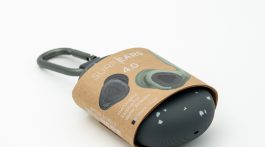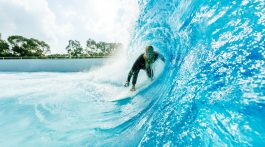The team from Future Fins help us out.
The surfboard fin is an essential add on to any surfboard purchase, but sometimes helping the customer choose the perfect fin can be a difficult task. Should they ride a quad, thruster, single fin, what templates, materials and size should the customer to choose? All these questions can make it difficult for a staff member to help make the right product for the surfer. Future Fins realised this, and came to the aid with their Ride Number System. We caught up with Futures Australian Marketing manager Josh Kwanten to help go through the system designed to make sure you can provide the customer with the right product knowledge.
What is the Ride Number?
The Ride Number rates a fin’s performance feel on a 1-10 scale, from Speed Controlling to Speed Generating respectively. The closer you get to 10, the more springy, fluid & responsive your board will feel to help generate speed. The closer you get to 1, the more solid, engaged & predictable your board will feel to help control speed. Fins with a Ride Number around 5 feel balanced & do not add any premium feelings to your board – they let your board’s original character shine.
What do different Ride Numbers feel like?
A fin with a rating of 1 feels Stable and Predictable, which can be especially beneficial with a lot of water moving. A fin with a rating of 10 feels Lively and Fluid, which is great for finding speed when the waves have less push. Some surfers will like the Neutral, Consistent feeling of midrange ride numbers for versatility in a variety of waves.
How do you use the Ride Number?
Start by determining what fin has the feeling you like, then try some of the other Ride Numbers, higher or lower on the scale, to see what benefits you can feel in the water. For example, like Michel Bourez, you might prefer an EA Techflex with a lower Ride Number in powerful conditions and change out to higher Ride Number like EA Blackstix in softer conditions.
Does the Ride Number compare all fins on the same scale?
No. All fins do have a Ride Number between 1-10, but the scale is reset in each weight class. The feeling associated with each rider number is the same, and riding the fins in your weight class will allow you to experience the benefits of the whole scale.
What are the factors considered in the Ride Number?
The Ride Number for each fin is calculated by an equation that considers Flex, Area and Foil, with Flex being weighted for the most impact. Most fins utilise a range of high tech materials that all change the way the fin helps the board perform.




TEXALIUM
Developed by advanced composite manufacturing company Hexcel, Texalium is a carbon-like material that is essentially fiberglass fabric with a thin surface coating of aluminum. Fins made using Texalium are stiffer than fiberglass, but more flexible than carbon fiber.


CARBON & KEVLAR
The most advanced surfboard fin materials in use today. Carbon in particular has an extremely high strength-to-weight ratio, giving carbon-based fins a feather-light platform that stores and releases energy through turns.
So to simplify it, 4 key questions to ask the customer.
1.How much do you weigh
- XS = 34 -52kg
- S = 47 – 70kg
- M = 65 – 88kg
- L = 80kg +
2. What sort of waves do you mainly surf?
Use this question to narrow down the material of the fin.The material determines flex: flex =projection, projection = speed, speed = control.
3. What are specifically is you desired performance you want out of the fin
- Speed Generating (Springy, fluid, responsive) Ride Number 10-7
- Balanced (all round performance) Ride Number 7-4
- Speed Control (Solid, engaged, predictable) Ride Number 4-1
4. What sort of fin Set up would you prefer?
- Tri Fin
- Quad Fin
- Five Fin






